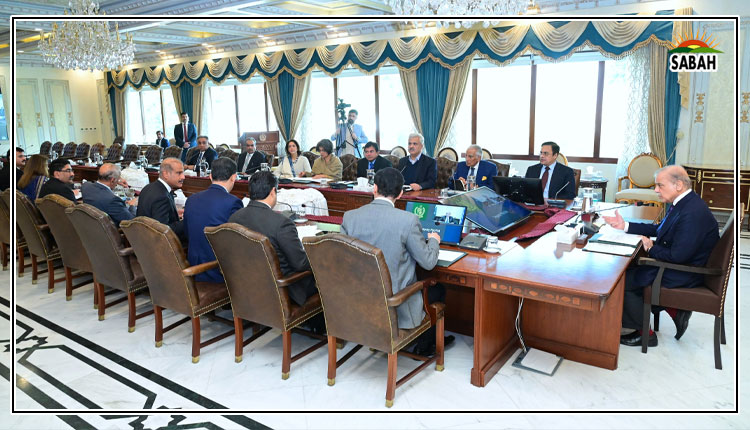The solid waste challenge…Abdul Sattar
Solid waste generation rates are on the rise across the world. One of the factors fuelling this generation is the rising trend of promoting a consumer culture that not only leads to the waste of over a billion ton of food each year but other types of waste as well.
The mad race for economic growth is also causing a phenomenal surge in the amount of global waste because policymakers tend to pay little attention to the catastrophic impacts of such growth, which is achieved at the cost of environmental degradation and damage to our ecosystem.
According to the World Bank, around 2.24 billion tonnes of solid waste was generated in 2020 globally, amounting to a footprint of 0.79 kilograms per person per day. It adds that with rapid population growth and urbanization, annual waste generation is expected to increase by 73 per cent from the 2020 levels to 3.88 billion tons in 2050.
A significant portion of this waste is plastic waste. The mushroom growth of plastic waste is a result of our lifestyle. The World Population Review asserts that the world has produced more than eight billion tons of plastic waste since 1950, more than half of which went straight to landfills. The global body bemoans the fact that very little of this only a meagre 9.0 per cent is recycled.
Scientists believe that plastic can wreak havoc, albeit slowly, on the environment in multiple ways from leaching toxic chemicals into soil and groundwater to directly choking or poisoning animals who unwittingly ingest it. Global industrial powers and most populous nations are generating the biggest amount of such waste.
According to the World Population Review, the US alone generated 34.02 million tons of plastic waste in 2016, India 26.33 million tons, China 21.60 million tons, Brazil 10.68 million tons, Indonesia 9.13 million tons, Russia 8.47 million tons, Germany 6.68 million tons, United Kingdom 6.47 million tons, Mexico 5.90 million tons and 4.88 million tons Japan.
Pakistans contribution to global warming is insignificant, but since its population has been increasing, it has led to an increased use of plastic. According to the Ministry of Climate Change, around three million tons of plastic waste was generated in Pakistan in 2022, and it is expected to reach 12 million tons by 2040.
At the government level, efforts do not seem to be made to address the issue of rising plastic waste. However, some private businesses and factories have been investing their energies to recycle plastic waste responsible for not only contaminating groundwater but also causing harm to our rivers, water streams and seas.
It is heartening to know that some factories in Pakistan are recycling millions of plastic bottles to produce raw materials for industries. In a meeting held by the Institute of Urbanism Islamabad, a CSR director told journalists about the scope of this recycling. A private factory is collecting 2100 to 2500 metric tons of bottles annually, recycling 1700 to 1800 metric tons per year. Twenty-four million bottles were recycled last year and the target for this year is around 75 million bottles. Raw materials out of these bottles are generated and supplied to various industries. It is unfortunate that only a few industries are working on such recycling as it is considered a labour-intensive sector.
It is not only plastic which could be recycled but other items from solid waste can also be recycled. It seems that the country does not have accurate data regarding the exact amount of solid waste that we generate annually. However, according to the International Trade Administration of the US, Pakistan generates approximately 49.6 million tons of solid waste a year, increasing more than 2.4 per cent annually. Pakistan lacks waste management infrastructure like other developing countries, creating serious environmental problems. Most municipal waste is either burned, dumped, or buried on vacant lots, threatening the health and welfare of the general population.
The government of Pakistan (GOP) estimates that 87,000 tons of solid waste is generated per week, mostly from major metropolitan areas. Karachi, Pakistans largest city with a population of over 16, 051,521, generated more than 16,500 tons of municipal waste daily in 2022. About 60-70 per cent of solid waste in the cities is collected.
Last year, the percentage of waste generated from ash, bricks, and dirt was 18 per cent, glass 6.0 per cent, textile 2.0 per cent, cardboard 7.0 per cent, food wastes 30 per cent, leather 1.0 per cent, paper 6.0 per cent, plastic 9.0 per cent, rubber 1.0 per cent, metal 4.0 per cent, wood 2.0 per cent and yard wastes 14 per cent.
Managing waste in large cities like Karachi and Lahore is increasingly becoming difficult. Their dumping over the ground poses environmental hazards while their burial as it is done in parts of Karachi could contaminate underground water. Karachi produced over 16,000 tons of solid waste daily in 2022, which can be put to good use if efficient ways of harnessing them are employed.
Lack of an effective policy over this has led to the rise of garbage or the waste mafia in the metropolis that not only fuels tensions between different communities but also causes the misuse of hospital waste. However, there is good news as well such as the interest of some companies in generating gas from cow dung in the largest city of Pakistan.
If such projects succeed, it will not only help generate power but also go some way in lessening the filth of the metropolis that is one of the biggest health hazards.
Some foreign companies have also expressed an interest in generating power from waste in Lahore. These companies can use 24 million legacy waste, which comparatively has less calorific value but can be harnessed with the help of modern technology, which some companies are promising to bring.
Around 14-million-ton legacy waste has been lying at the Mehmood Booti dump site of Lahore since 2016, and another ten million ton such waste has been there at the Lakhodair dump site of the city since 2012-2013. Waste in Lahore is on the rise. The citys administration can also provide 5,000 to 7,000 fresh waste to these companies or any company that qualifies for the project. If foreign companies do not live up to their promises. The local authorities should make efforts to utilize this waste, generating power that can help dispose of this huge amount of waste.
Islamabad also generates between 600 to 800 tons of waste daily. According to a report published by the United Nations Economic and Social Commission for Asia and the Pacific, An increasing amount of solid waste is generated in the city, rising from around 500-600 tonnes per day in 2004 to around 800-1,000 tonnes per day in 2011. Such waste could also be used to generate power but experts believe this generation is not easy as it is costly, suggesting that the government should also provide subsidies to companies interested in generating power.
Our faltering economy cannot allow the government to dole out subsidies. However, efforts can be made to persuade companies, including foreign ones, to work in a way that the government does not have to offer them such subsidies. Many companies can come up with models that might help them develop this power generation facility and secure a reasonable profit from this generation without asking the government for subsidies for the entire process.
Again, if no foreign company is interested, the CDA should mobilize its resources, diverting funds from unnecessary infrastructure projects towards these sustainable schemes.
Courtesy The News












